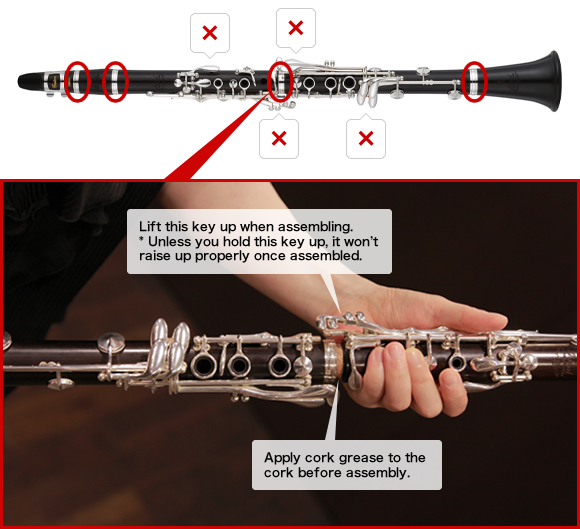
Clarinet Learn More
Share
ORIGINS OF CLARINET from Wikipaedia
While the similarity in sound between the earliest clarinets and the trumpet may hold a clue to its name, other factors may have been involved. During the Late Baroque era, composers such as Bach and Handel were making new demands on the skills of their trumpeters, who were often required to play difficult melodic passages in the high, or as it came to be called, clarion register. Since the trumpets of this time had no valves or pistons, melodic passages would often require the use of the highest part of the trumpet's range, where the harmonics were close enough together to produce scales of adjacent notes as opposed to the gapped scales or arpeggios of the lower register. The trumpet parts that required this specialty were known by the term clarino and this in turn came to apply to the musicians themselves. It is probable that the term clarinet may stem from the diminutive version of the 'clarion' or 'clarino' and it has been suggested that clarino players may have helped themselves out by playing particularly difficult passages on these newly developed "mock trumpets".[1]
Johann Christoph Denner is generally believed to have invented the clarinet in Germany around the year 1700 by adding a register key to the earlier chalumeau, usually in the key of C. Over time, additional keywork and airtight pads were added to improve the tone and playability.[2]
The clarinet has proved to be an exceptionally flexible instrument, used in the classical repertoire as in concert bands, military bands, marching bands, klezmer, jazz, and other styles.
Professional clarinets are
most commonly made from wood, African hardwood or grenadilla and student clarinets from plastic resin.
How to make a sound
To make the perfect embouchure for the best clarinet sound, place your bottom lip against your teeth so your chin is flat. Place your clarinet's mouthpiece on your bottom lip, rest your teeth on top of the mouthpiece, and then close your lips to keep the air in.
How to play a clarinet
Assembly
× Do not hold the clarinet by the areas marked with an X shown here when putting it together.
Apply cork grease to the cork portions of the clarinet before putting it together.
Put the reed on the mouthpiece, and line up the ligatures properly before tightening them.

How to hold a clarinet
Relax your shoulders and round your fingers to hold the clarinet naturally.

From the front

Angle seen from the side
How to use the mouthpiece
Follow these steps for using the mouthpiece:
- Cover your bottom teeth with your bottom lip gently.
- Set the reed on your bottom lip.
- Place your top teeth firmly on the mouthpiece.
- Close your mouth as if you are smiling.
How to create sound
In order to produce good sound, you should blow facing straight forward, without puffing your cheeks out.
Use only the thumb of your right hand to support the instrument, and hold the barrel with your left.
How much of the mouthpiece you put in your mouth and the angle at which you hold the clarinet are important points.
* If you don't put the mouthpiece in your mouth far enough, it will be hard to make any sound. If you put it in too far, the sound can get distorted.
A good angle for holding the clarinet
Too high
Too low
Practice fingering
Once you have mastered holding the clarinet and producing sound, try playing with the fingerings shown below.
When you can play all the notes in this simple scale, try playing while you're looking at the score.


Score for Frère Jacques
Listen to Frère Jacques
How to practice glissando
There are many different ways to practice the glissando technique. We'll introduce just one of them here.
- Begin by playing a B♭, on the second line of the staff.
- Try loosening your mouth while playing this note to, and try to bring it down a major second interval to A♭.
- Keep your mouth just like it is and play a C (on the third space) and return your mouth to normal as you open up the keys by pulling your fingers off.
This method will allow you to play a glissando from C to B♭. Once you learn the basics of this practice routine, you'll be able to learn all kinds of other sounds, too.
How to take care of a clarinet
Use a swab to wipe the moisture out of the inside of the clarinet.

Cleaning with a swab (bell side)

Cleaning with a swab (mouthpiece side)
The purpose of patches and how to use them
If you don't use a patch (sometimes called a cushion), your teeth might sometimes slip where they contact the mouthpiece, it might be harder for your to keep your embouchure (the way you hold your mouth) stable, and your mouthpiece might even get scratched where your teeth touch it. A patch is a small piece of material like a sticker that you can put on your mouthpiece where your teeth touch it in order to avoid these problems. When putting one on, be careful that it doesn't hang over the edge of the mouthpiece.
